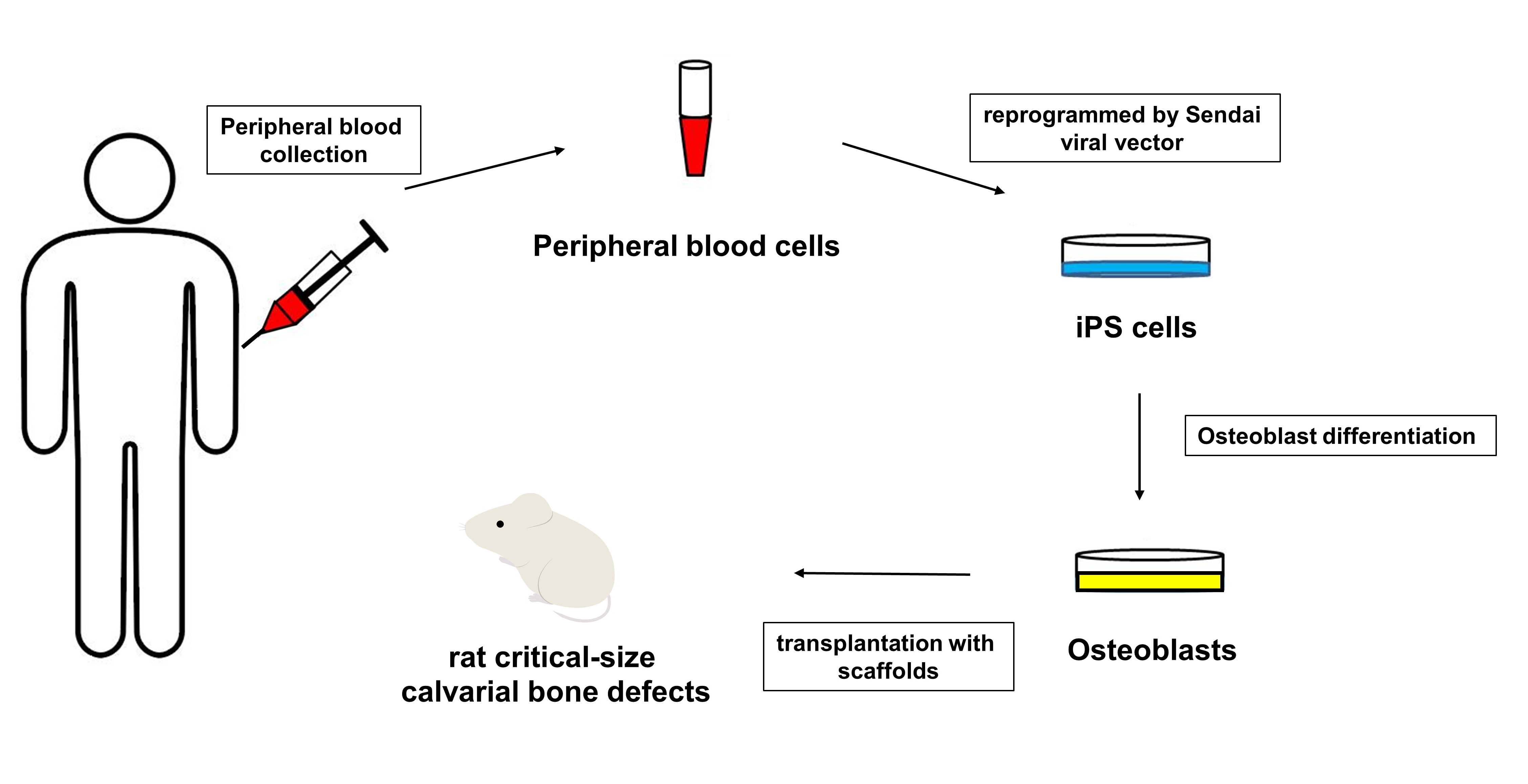Bone regeneration of induced pluripotent stem cells derived from peripheral blood cells in collagen sponge scaffolds
DOI:
https://doi.org/10.1590/1678-7757-2021-0491Keywords:
Induced pluripotent stem cell, Osteoblast, Bone regenerationAbstract
Stem cell-based regeneration therapy offers new therapeutic options for patients with bone defects because of significant advances in stem cell research. Although bone marrow mesenchymal stem cells are the ideal material for bone regeneration therapy using stem cell, they are difficult to obtain. Induced pluripotent stem cells (iPSCs) are now considered an attractive tool in bone tissue engineering. Recently, the efficiency of establishing iPSCs has been improved by the use of the Sendai virus vector, and it has become easier to establish iPSCs from several type of somatic cells. In our previous study, we reported a method to purify osteogenic cells from iPSCs. Objective: This study aimed to evaluate the osteogenic ability of iPSCs derived from peripheral blood cells. Methodology: Mononuclear cells (MNCs) were obtained from human peripheral blood. Subsequently, T cells were selectively obtained from these MNCs and iPSCs were established using Sendai virus vectors. Established iPSCs were evaluated by the expression of undifferentiated markers and teratoma formation assays. Osteoblasts were induced from these iPSCs and evaluated by the expression of osteoblast markers. Additionally, the induced osteoblasts were transplanted into rat critical size calvaria bone defect models with collagen sponge scaffolds. Samples were evaluated by radiographical and histological assessments. Results: Induced osteoblasts expressed several osteoblast-specific markers. The results of radiographical and histological assessments revealed that the cell transplant group had bone formations superior to those of the control group. Conclusions: This study suggests that peripheral blood MNCs have the potential to differentiate into osteoblasts. Although there are some hurdles in iPSC transplantation, osteoblasts obtained from MNC-iPSCs could be applied to bone regeneration therapy in the future.
Downloads

Downloads
Published
Issue
Section
License
Copyright (c) 2022 Journal of Applied Oral Science

This work is licensed under a Creative Commons Attribution 4.0 International License.
Todo o conteúdo do periódico, exceto onde está identificado, está licenciado sob uma Licença Creative Commons do tipo atribuição CC-BY.

